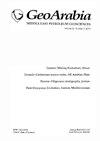阿曼西南部Haushi-Huqf地块和阿曼山脉Hawasina推覆体的toarian和bajoian菊石:古生态学和古生物地理学意义
引用次数: 3
摘要
在阿曼发现了新的和罕见的侏罗纪菊石。在阿曼西南部的Haushi-Huqf地块发现了一个最新的巴约西亚阿拉伯台地型物种,在阿曼山脉的Hawasina推特构造的kaur - misfah奇异单元发现了地中海特提斯和欧洲西北部典型的巴约西亚物种。新动物群提供的年代导致了对包含岩石的地质历史及其古生态学和古生物地理学的重新解释。值得注意的是,来自阿拉伯地台浅海环境的菊石与来自地中海特提斯和欧洲西北部公海环境的菊石种类非常接近。这表明,阿拉伯省的地方性是由于生态隔离造成的,而阿曼边缘的开放海洋环境,特别是边缘的远洋海山,构成了特提斯西部和东部(或印度-西南太平洋)之间的迁徙路线的一部分,也许更远。在加拿大太平洋科迪勒拉阿曼边缘开放海洋环境的大多数分类群中,菊石动物群的特提斯和大流行组分的出现,重新打开了早侏罗世在西班牙海洋走廊完全开放之前的太平洋生物地理学问题。在提出的模型中,牛顿的泛向分布模型从白垩纪古生物地理学的角度进行了检验,特别是参考了芦德。本文章由计算机程序翻译,如有差异,请以英文原文为准。
Toarcian and Bajocian ammonites from the Haushi-Huqf Massif of southwestern Oman and the Hawasina Nappes of the Oman Mountains: Implications for paleoecology and paleobiogeography
New and rare Jurassic ammonites have been found in Oman. A latest Bajocian Arabian Platform-type species was discovered in the Haushi-Huqf Massif autochthon of southwestern Oman, and Bajocian species typical of the Mediterranean Tethys and northwestern Europe were found in the Kawr-Misfah exotic unit of the Hawasina Nappes in the Oman Mountains.
The dates provided by the new fauna have resulted in a reinterpretation of the geologic history of the containing rocks, and of their paleoecology and paleobiogeography. It is significant that ammonites from shallow-marine environments of the Arabian Platform are in close proximity to species from open-sea environments of the Mediterranean Tethys and northwestern Europe. This shows that endemism of the Arabian Province resulted from ecological isolation, whereas open-marine environments on the Oman margin, especially the pelagic seamounts off the margin, form part of a migration route between western and eastern Tethys (or Indo-Southwest Pacific), and perhaps far beyond. The occurrences among the Tethyan and pandemic components of ammonite faunas in the Canadian Pacific Cordillera of most of the taxa of the open-marine environments on the Oman margin reopens the question of Pacific biogeography during the Early Jurassic before the Hispanic oceanic corridor was completely open. Among the proposed models, the Pantropic Distribution Model of Newton is examined in the light of the Cretaceous paleobiogeography, with particular reference to rudists.
求助全文
通过发布文献求助,成功后即可免费获取论文全文。
去求助
来源期刊

Geoarabia
地学-地球科学综合
自引率
0.00%
发文量
0
审稿时长
>12 weeks
期刊介绍:
Cessation. Published from 1996 to 2015, GeoArabia, The Journal of the Middle Eastern Geosciences was a quarterly journal covering the petroleum geosciences in the Middle East. The journal covers subjects such as: - sedimentology - tectonics - geophysics - petroleum reservoir characterization
 求助内容:
求助内容: 应助结果提醒方式:
应助结果提醒方式:


